JULY 9 - SEPTEMBER 7, 2020
CULTURE PLACE | AMERICAN CENTURY
JULY 9 - SEPTEMBER 7, 2020
CULTURE PLACE | AMERICAN CENTURY
Head-Image
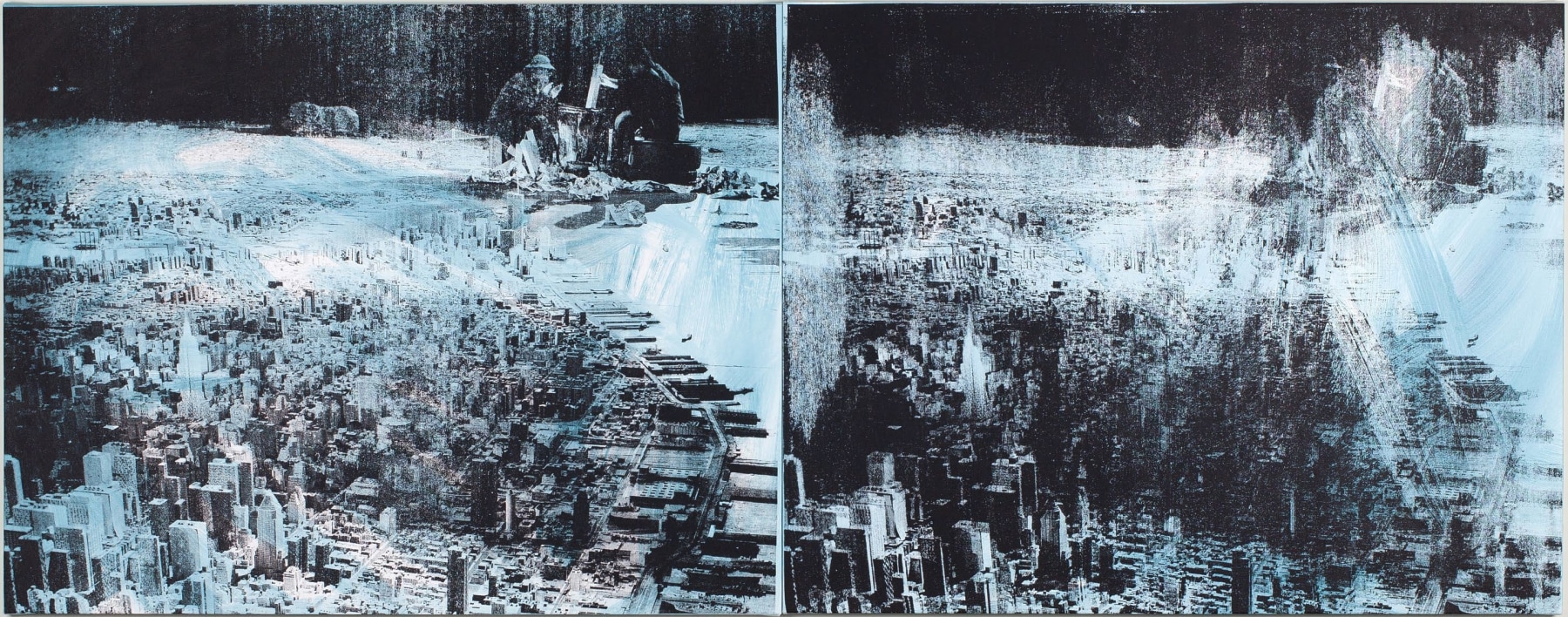
THE BRUCE HIGH QUALITY FOUNDATION, Hoovervilles, 2011, silkscreen, acrylic paint on canvas, 35 3/4 x 90 1/2 inches (diptych)
McClain Gallery's inaugural presentation for Culture Place, American Century, includes artwork that mines North America's past and symbols of national identity. Together they speak of uncertainty, political upheaval, and social injustices while inviting dialogue and looking toward change.
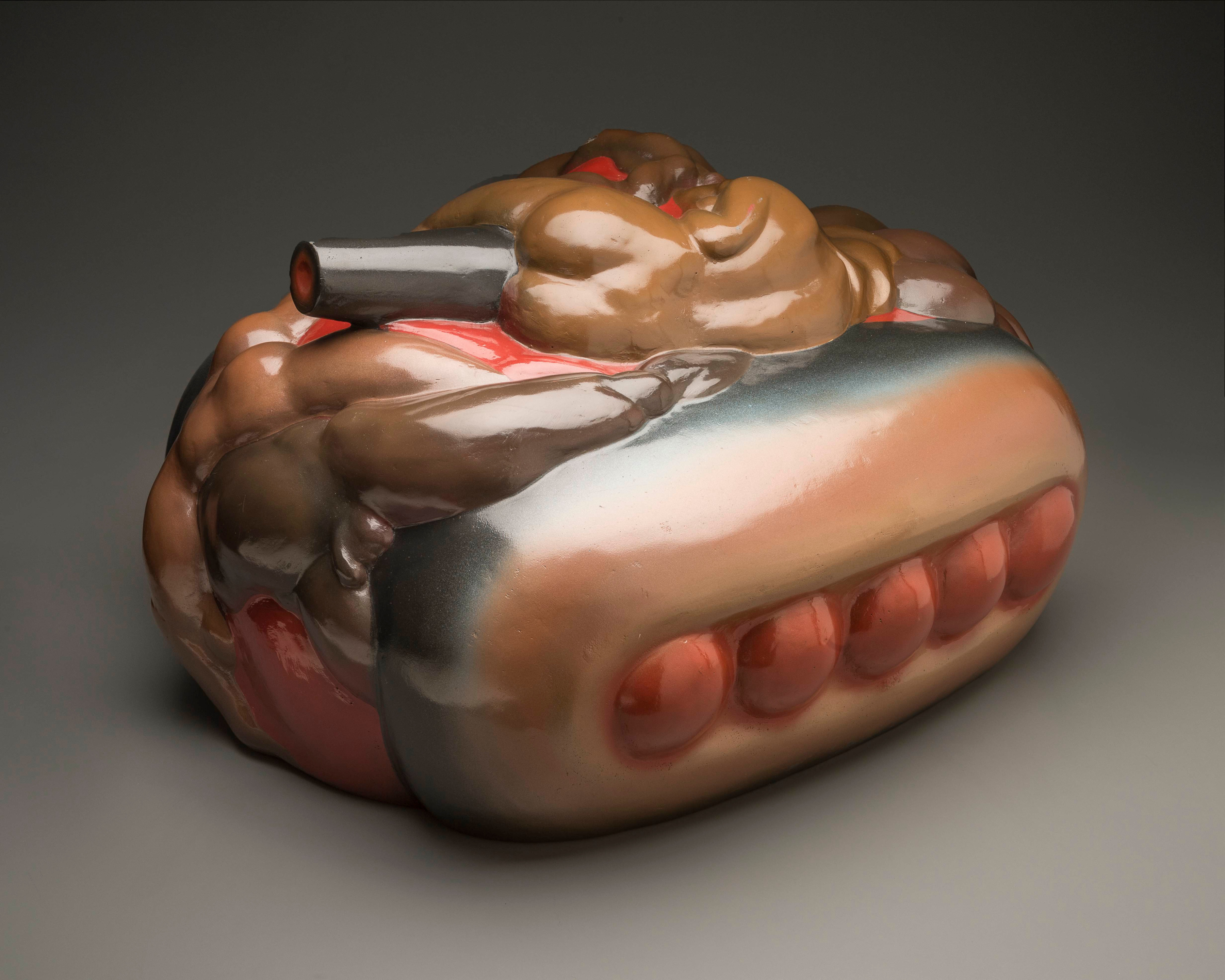
LUIS JIMÉNEZ, Tank - Spirit of Chicago, 1968, polychrome fiberglass, 19 x 34 x 30 inches
The Bruce High Quality Foundation's history painting, Hoovervilles, references the shanty/tent towns that appeared across the states during the Great Depression in the 1930s. In the picture, two giant homeless figures burn the Twin Towers to keep warm at the end of Wall Street.
Luis Jiménez's 1968 Tank-Spirit of Chicago depicts an army tank with "sprawled black and brown bodies fused to its surface, its cannon thrust between the legs of a female victim and its treads suggesting the teeth of a skull." This visceral sculpture is a commentary on "the confrontation between Vietnam war protesters (including the Youth International Party and Black Panthers) during the 1968 Democratic Convention in Chicago, which was suppressed with great violence by the police." –Jiménez, Luis, Lippard, Lucy R., Anaya, Rudolfo A., "Man on Fire: Luis Jiménez", The Albuquerque Museum, 1994, p.11 (text appears in Luis Jiménez, Recycling the Ordinary into the Extraordinary, essay by Shifra M. Goldman, image reproduced p. 79).
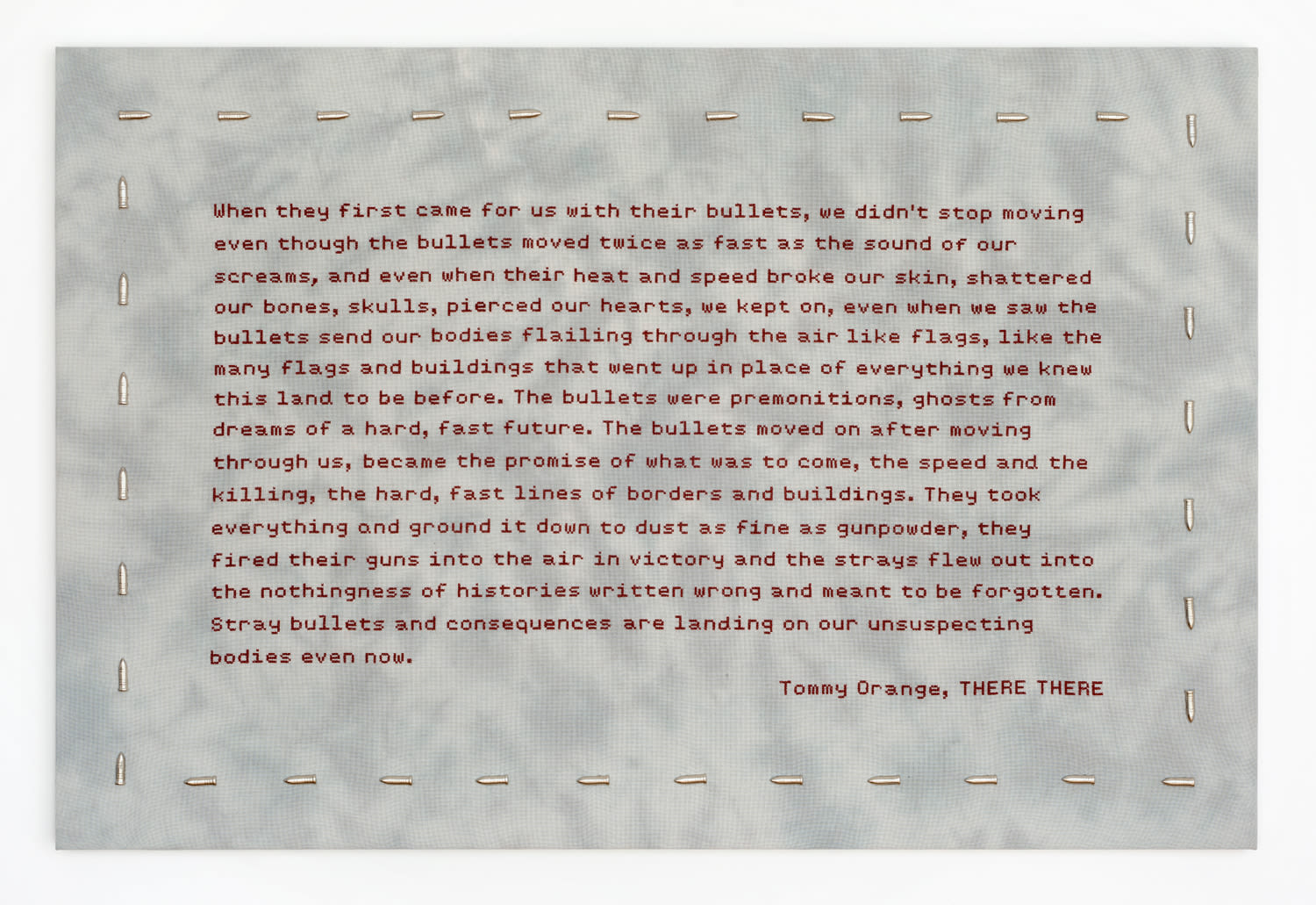
ELAINE REICHEK, When They First Came for Us, 2019, hand embroidery with metal studs on linen, 28 x 42 inches
In Elaine Reichek's hand-embroidered work, When They First Came for Us, 2019, she appropriates a powerful passage from Cheyenne and Arapaho author Tommy Orange's 2018 novel There There: "When they first came for us with their bullets, we didn’t stop moving even though the bullets moved twice as fast as the sound of our screams, and even when their heat and speed broke our skin, shattered our bones, skulls, pierced our hearts, we kept on, even when we saw the bullets send our bodies flailing through the air like flags, like the many flags and buildings that went up in place of everything we knew this land to be before. The bullets were premonitions, ghosts from dreams of a hard, fast future. The bullets moved on after moving through us, became the promise of what was to come, the speed and the killing, the hard, fast lines of borders and buildings. They took everything and ground it down to dust as fine as gunpowder, they fired their guns into the air in victory and the strays flew out into the nothingness of histories written wrong and meant to be forgotten. Stray bullets and consequences are landing on our unsuspecting bodies even now." - Tommy Orange, “There There” (New York: Knopf, 2018), 10.
Along the border of the work, she has hand-sewn metal likenesses of bullet shells, like an illuminated manuscript made for the 21st century–where a symbol of violence easily displaces images of nature and vitality.
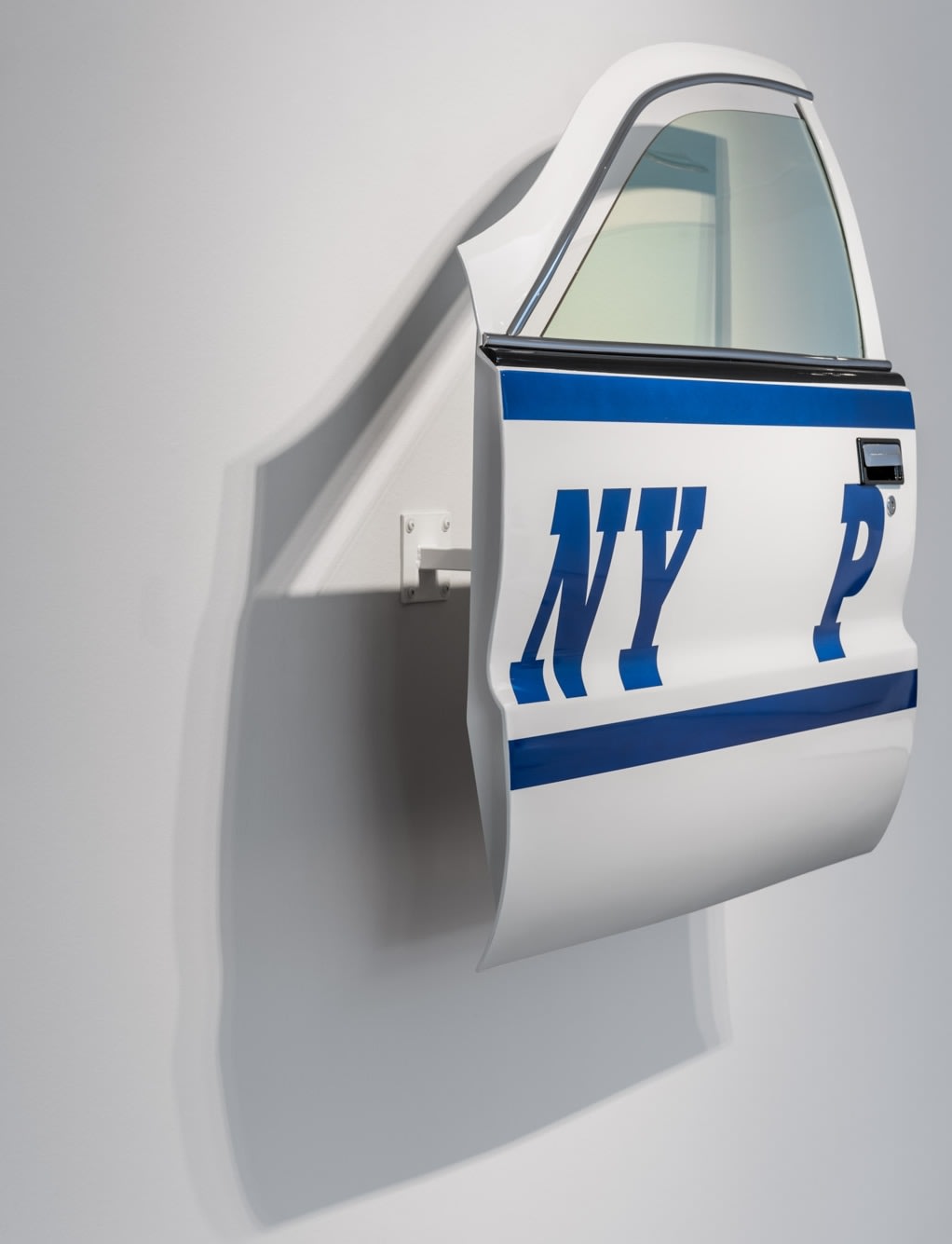
JONATHAN SELIGER, Caprice, 2011, automotive enamel on bronze, chrome-plated bronze, glass, 48 x 54 x 12 inches
Jonathan Seliger's Caprice, 2011, is a model of an NYPD car door, both 15% smaller than the original and missing the shield part of the logo. He has said, "In a way shrinking the scale even slightly made it anti-heroic; the piece was intended to touch on strife in society, the necessity for order and the impending threat of chaos, civil unrest and the dissolution and mistrust of authority, shifting polarities, the constancy of Law."
His Disappearing Fabric, 2006, was made around the wake of Hurricane Katrina. At more than seven feet wide, the oversized dry-cleaning hanger is draped in an American flag imprinted with a note about donations made to the American Red Cross Disaster Relief Fund. The inspiration behind the piece was multi-fold: the actual damage and disintegration of garments over time and dialogue with Jasper John's works from the late 50-60s. Seliger said he "was reflecting on the fraying of any sense of common ground on what it meant and means to be an American, the differences between a post-war (i.e. WW2) or pre-Vietnam war generation and into the 2000s. At the time that I made the piece, it seemed like we were at a critical juncture, but as we can all see the situation has only continued to slide in a far more dangerous direction..." Disappearing Fabric also hints at the complexities of fraught nationalism, and the divide between activism, charitable donations, and positive change.
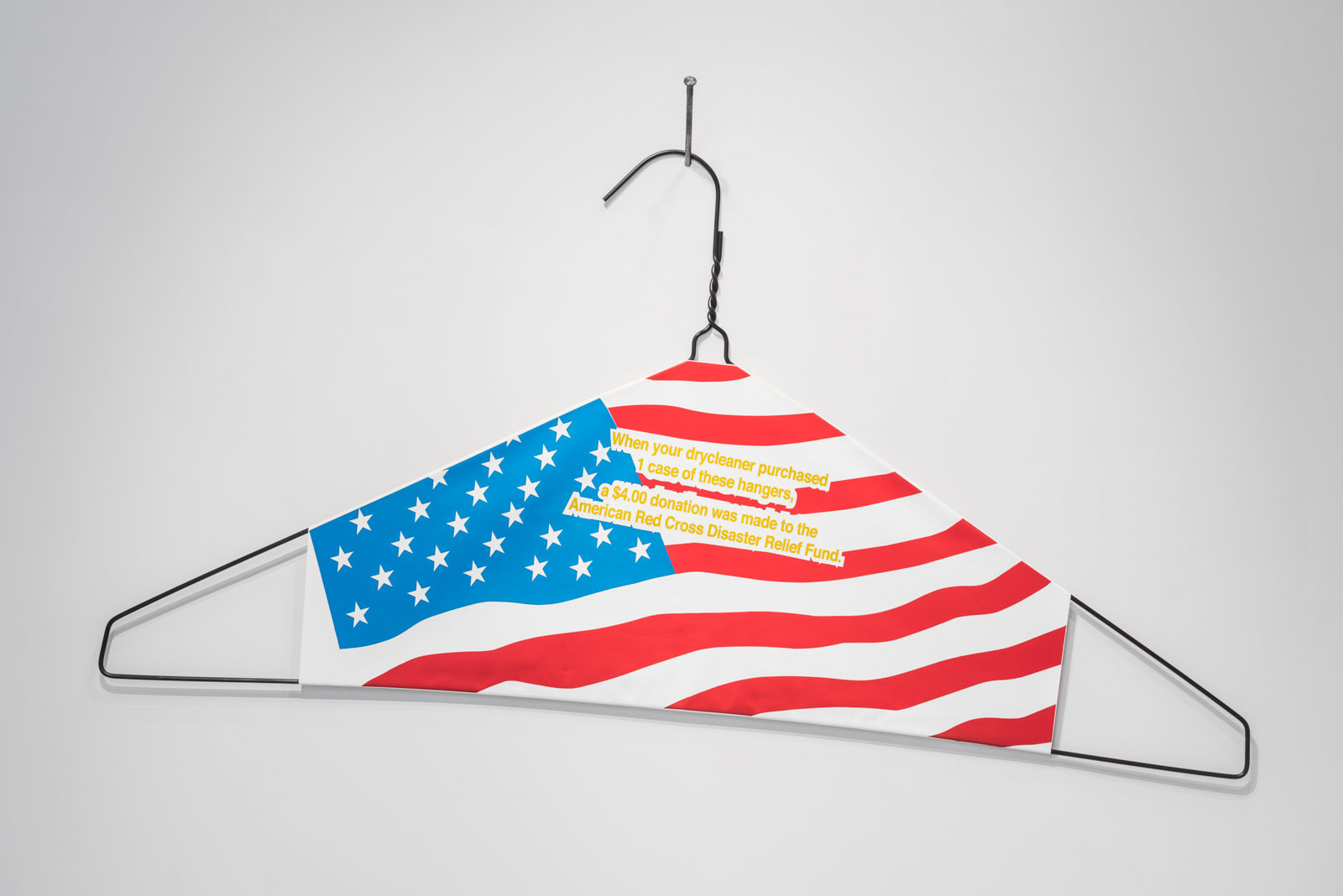
JONATHAN SELIGER, Disappearing Fabric, 2006, copper, steel, oil, acrylic and modeling paste on canvas, 45 x 89 x 10 inches
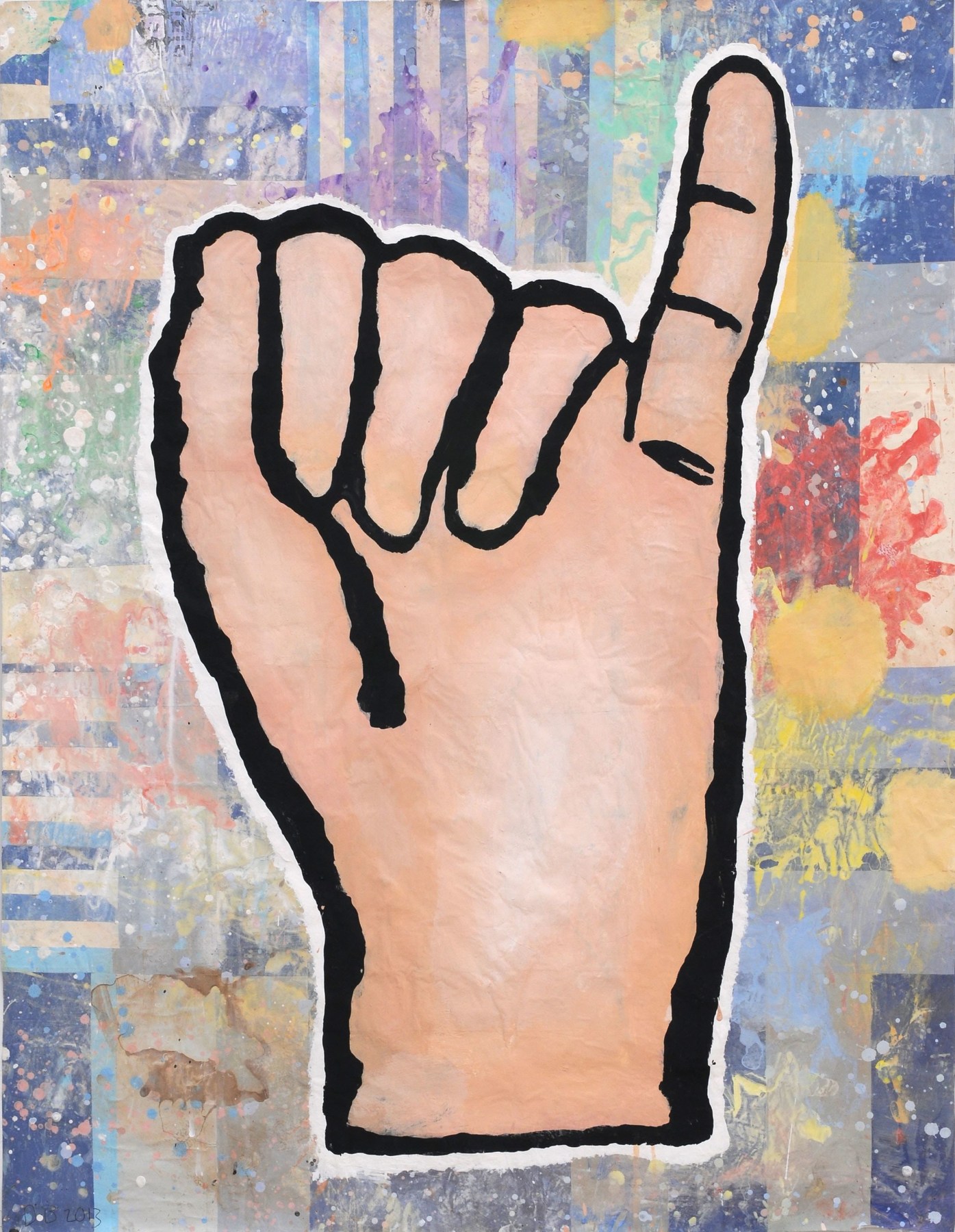
DONALD BAECHLER, SOME PROPHECY, 2013, gesso, Flashe, and paper collage, 52 x 40 inches
Donald Baechler's SOME PROPHECY, 2013 displays a larger than life hand signing, or ready for a pinky swear; we're not sure which. This gesture's boldness suggests something that might be universally understood, but now disembodied and with ambiguous intent, it is at once humorous and alienating. His bronze sculpture HEAD 2: a frowning bust wearing a sideways baseball cap feels part nostalgic (think a sun-filled American summer), but also sorrowful.

JOHN ALEXANDER, Black Crows, 2017, monotype and pastel on paper, 32 x 25 inches
John Alexander is known for his social critique of corrupt politicians and hypocritical authority figures, often masked or anthropomorphized into a hybrid animal form. Here, Alexander beautifully renders portentous crows in monotype and pastel. Kent Dorn's Fugitive is a post-apocalyptic everyman: encrusted, world-weary, and without mooring. Signs by Ed Ruscha and Gary Simmons show a rusty "Dead End" and a burning "Hollywood." Those symbols of progress, a seemingly endless road west, or the mythical path to stardom, are no longer infinite, shiny, or new.
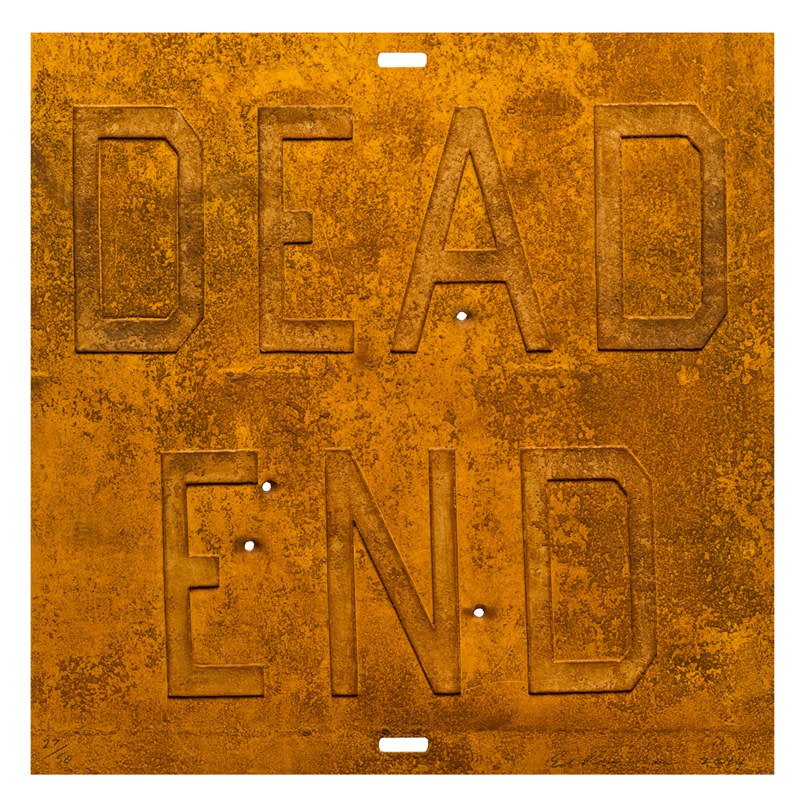
ED RUSCHA, Rusty Signs - Dead End 2, 2014, Mixografía® print on handmade paper, 24 x 24 inches, Ed 33/50, 10 AP
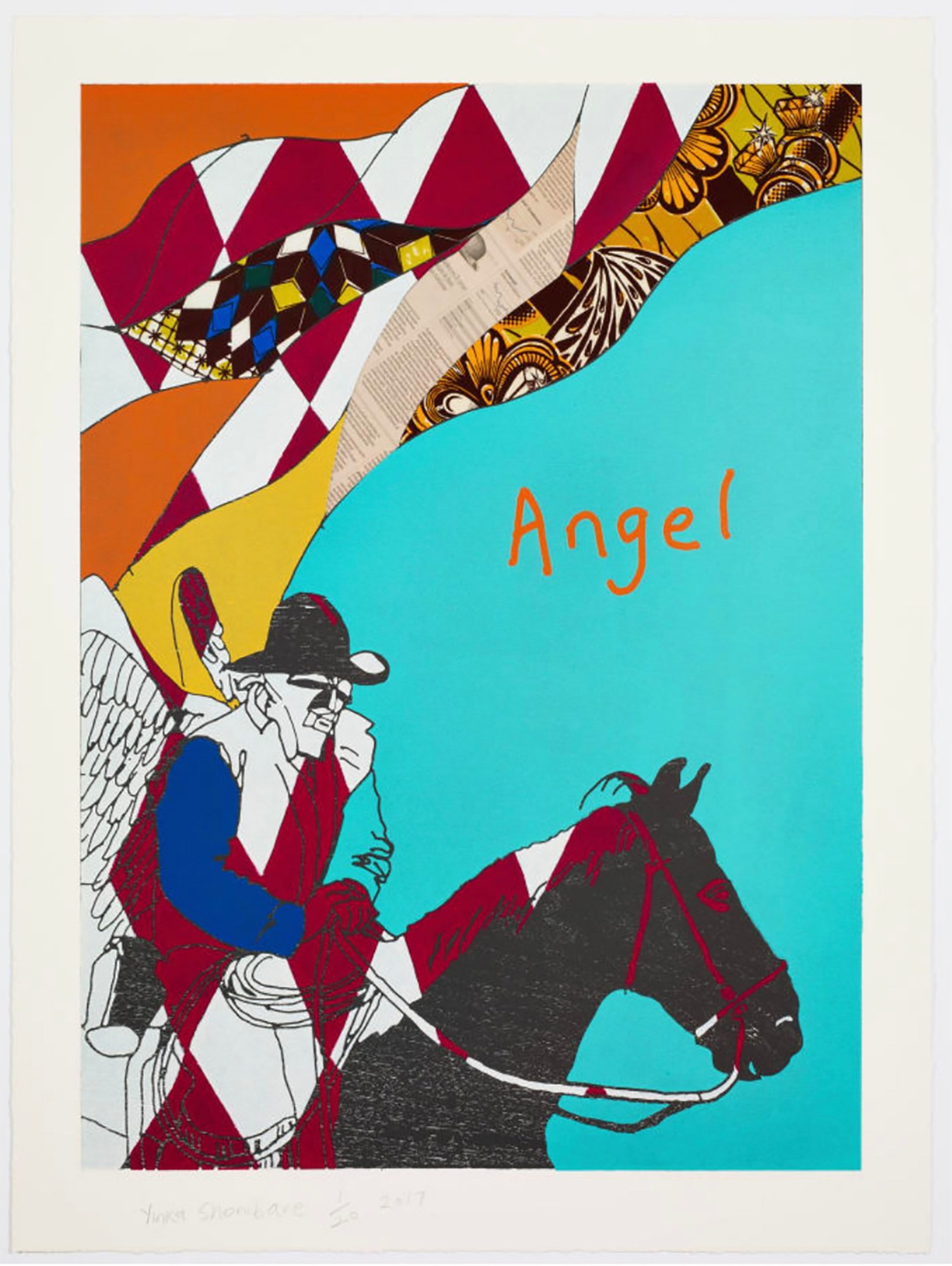
YINKA SHONIBARE, Cowboy Angel I (From Cowboy Angels Portfolio), 2017, woodcut with fabric collage on Sumerset Tub Sized Satin 410gsm paper, 37.2 x 27.56 inches, Edition 14 of 20
Yinka Shonibare's woodcut print of a Cowboy Angel I (2018) combines representations of the iconic American West cowboy with African masks, angels, and a fragment of Dutch-wax print fabric. Through layered imagery and materiality, he addresses issues of imperialism with themes of immigration and xenophobia in Europe and North America. Standing alongside, Roy Lichtenstein's woodcut American Indian Theme IV, 1980, combines loose references to indigenous artifacts and Native American motifs with the graphics of his contemporary prints–bridging two otherwise different facets of American culture.

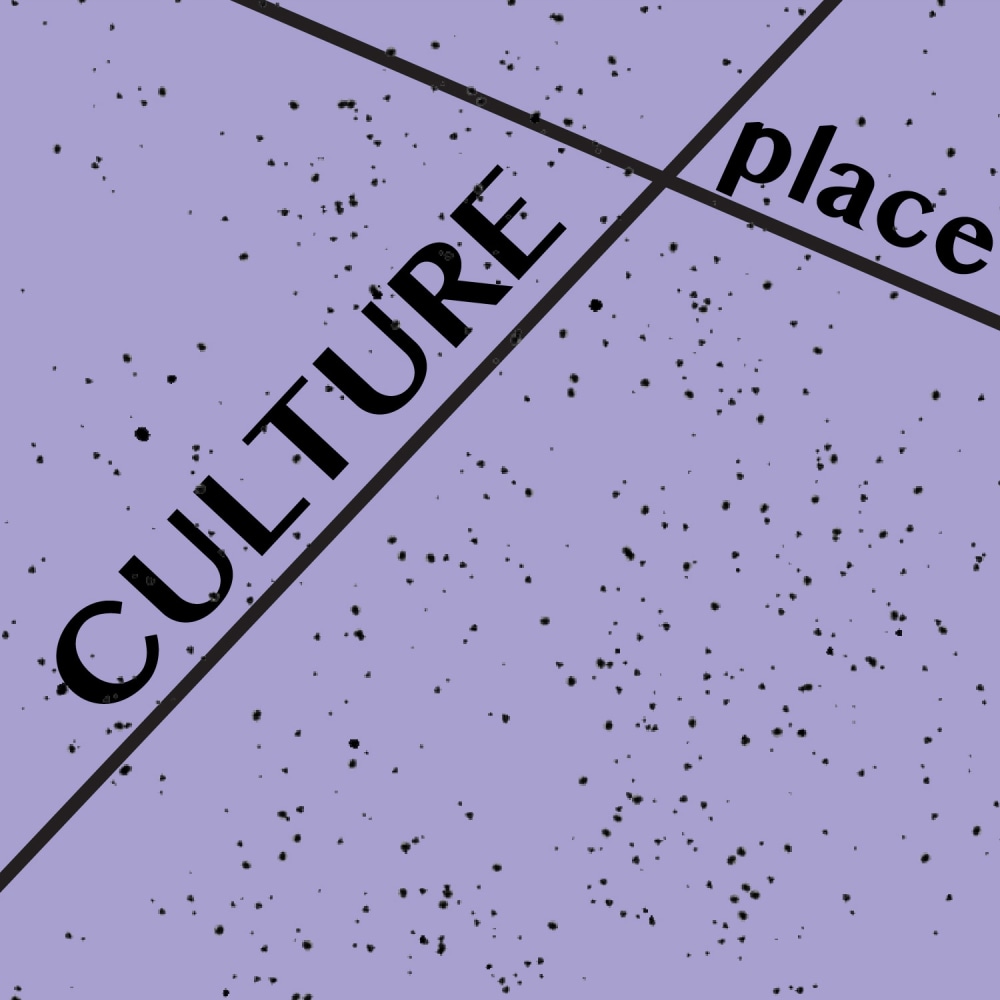
The Dallas Art Fair has launched Culture Place, Inc., a digital marketplace for contemporary art collectors to discover, connect, and buy from galleries across the region, which will be augmented with weekly artist studio visits, conversations, and other online programming.
Website: www.cultureplace.com
Instagram: @thecultureplace





























